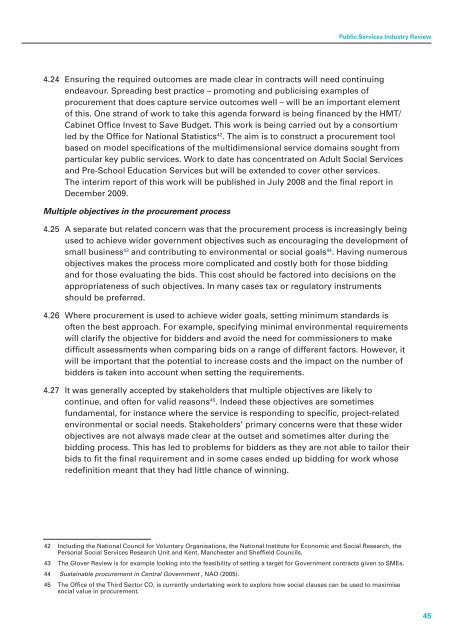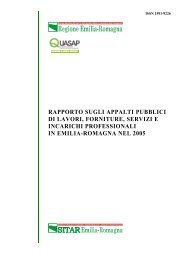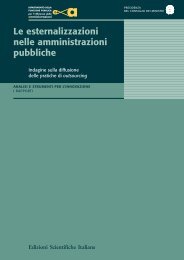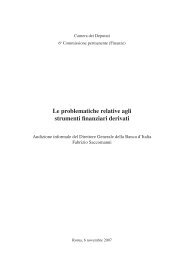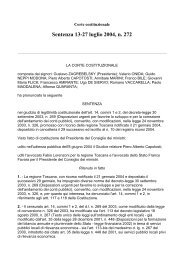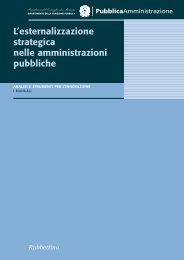Understanding the Public Services Industy
Understanding the Public Services Industy
Understanding the Public Services Industy
You also want an ePaper? Increase the reach of your titles
YUMPU automatically turns print PDFs into web optimized ePapers that Google loves.
<strong>Public</strong> <strong>Services</strong> Industry Review<br />
4.24 Ensuring <strong>the</strong> required outcomes are made clear in contracts will need continuing<br />
endeavour. Spreading best practice – promoting and publicising examples of<br />
procurement that does capture service outcomes well – will be an important element<br />
of this. One strand of work to take this agenda forward is being financed by <strong>the</strong> HMT/<br />
Cabinet Office Invest to Save Budget. This work is being carried out by a consortium<br />
led by <strong>the</strong> Office for National Statistics 42 . The aim is to construct a procurement tool<br />
based on model specifications of <strong>the</strong> multidimensional service domains sought from<br />
particular key public services. Work to date has concentrated on Adult Social <strong>Services</strong><br />
and Pre-School Education <strong>Services</strong> but will be extended to cover o<strong>the</strong>r services.<br />
The interim report of this work will be published in July 2008 and <strong>the</strong> final report in<br />
December 2009.<br />
Multiple objectives in <strong>the</strong> procurement process<br />
4.25 A separate but related concern was that <strong>the</strong> procurement process is increasingly being<br />
used to achieve wider government objectives such as encouraging <strong>the</strong> development of<br />
small business 43 and contributing to environmental or social goals 44 . Having numerous<br />
objectives makes <strong>the</strong> process more complicated and costly both for those bidding<br />
and for those evaluating <strong>the</strong> bids. This cost should be factored into decisions on <strong>the</strong><br />
appropriateness of such objectives. In many cases tax or regulatory instruments<br />
should be preferred.<br />
4.26 Where procurement is used to achieve wider goals, setting minimum standards is<br />
often <strong>the</strong> best approach. For example, specifying minimal environmental requirements<br />
will clarify <strong>the</strong> objective for bidders and avoid <strong>the</strong> need for commissioners to make<br />
difficult assessments when comparing bids on a range of different factors. However, it<br />
will be important that <strong>the</strong> potential to increase costs and <strong>the</strong> impact on <strong>the</strong> number of<br />
bidders is taken into account when setting <strong>the</strong> requirements.<br />
4.27 It was generally accepted by stakeholders that multiple objectives are likely to<br />
continue, and often for valid reasons 45 . Indeed <strong>the</strong>se objectives are sometimes<br />
fundamental, for instance where <strong>the</strong> service is responding to specific, project-related<br />
environmental or social needs. Stakeholders’ primary concerns were that <strong>the</strong>se wider<br />
objectives are not always made clear at <strong>the</strong> outset and sometimes alter during <strong>the</strong><br />
bidding process. This has led to problems for bidders as <strong>the</strong>y are not able to tailor <strong>the</strong>ir<br />
bids to fit <strong>the</strong> final requirement and in some cases ended up bidding for work whose<br />
redefinition meant that <strong>the</strong>y had little chance of winning.<br />
42 Including <strong>the</strong> National Council for Voluntary Organisations, <strong>the</strong> National Institute for Economic and Social Research, <strong>the</strong><br />
Personal Social <strong>Services</strong> Research Unit and Kent, Manchester and Sheffield Councils.<br />
43 The Glover Review is for example looking into <strong>the</strong> feasibility of setting a target for Government contracts given to SMEs.<br />
44 Sustainable procurement in Central Government , NAO (2005).<br />
45 The Office of <strong>the</strong> Third Sector CO, is currently undertaking work to explore how social clauses can be used to maximise<br />
social value in procurement.<br />
45


